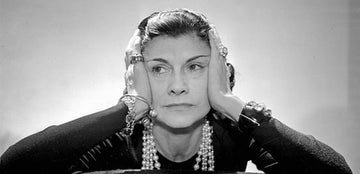
Japan has been one of the world's largest luxury markets since the 1980s, and coupled with the US, sales of pre-owned luxury goods make up for 30% of the overall luxury market. But where did it all begin? Open for Vintage investigates the leading second-hand luxury market.
In the 1980s, Japan became the world's only ‘mass luxury market’ [purchasing of luxury brands became mainstream]. Following rapid economic development, it became a rite of passage for middle class [rather than upper class] consumers to have an Hermès scarf, or a Louis Vuitton bag. This boom is represented by the staggering number of stores the respective brands had in Japan at the time [keep in mind Japan has approximately half the population of the US]. Hermès had 64 stores in Japan, and 30 in the US. Prada had 35 stores in Japan and 15 in the US. Burberry had 75 stores in Japan and less than half the number in the US.
At the time, there was also a general belief in Japan that European brands produced better quality products than local brands; and these also held a certain level of emotional value and acted as a status symbol. This worked in favour of brands at the time as there was only luxury fashion to act as a status indicator. This changed when high-end lifestyle brands started moving into Japan, like restaurants and hotels. Consumers started opting to spend on a nice hotel or meal, rather than a designer purchase. This meant many of the brands had to downsize and close stores to accommodate for the decreased mainstream popularity of the brands.
As consumers began cutting down on these luxury fashion purchases, many opted to downsize and sell their own collections; meaning the [now] uber-cool collections from the 80’s and 90’s started flooding back into the second hand market. This paired with the fact that Japanese consumers are renowned for their tastes rapidly changing, means a continuous flow of items back into the second-hand market. This is especially appealing for foreign consumers as there is a conscious level of care when it comes to the handling of luxury goods in Japan, meaning these items from decades ago, often look brand new.
Other than natives and tourists who have visited Japan, the second-hand market was once fairly underground, and only those who knew were privy to its secrets. This was until in the mid 2010s when videos surfaced of the “Pawnshop Big Bargain”. This can be likened to a warehouse sale where 20 or so luxury goods pawn shops club together their items in a thrift-shop style setting, and usually are themed by brand - this one was a Louis Vuitton sale. There was speculation about whether the items were fake and where they came from, a rumour which was quickly debunked by the strict laws against counterfeit goods in Japan.
Japan has always been a breeding place for the worlds of art and fashion to come together; like Yayoi Kusama, Takashi Murakami and COMME des GARÇONS; all of whom have limited edition collections with Louis Vuitton - ones that you’ll find in [nearly] every pawn shop in Japan, and in abundance. Remember when Kim Kardashian bought half-a-dozen matching nano Murakami multicolour speedy’s for the baby girls in the Kardashian/Jenner family? Enter our partner boutique, Amore Vintage, who sourced and sold these to the 21st century fashion icon.
Amore Vintage is a Tokyo based luxury vintage brand, based in the fashionable district of Shibuya; an area where you can find some of the city's best vintage stores. Amore is a favourite of many celebrities; including Hailey Bieber, Bella Hadid, Madison Beer and Dua Lipa who is quoted saying it is “the best collection of vintage designer bags and accessories” - for some reason we don’t find that hard to believe.
We spoke to our Tokyo-based partner boutique to find out exactly why our favourite style icons love Amore, and vintage luxury in Japan.
What is the most popular brand or piece people come to buy from Amore Vintage?
CHANEL, for sure! We own 8,000+ items and more than half of them are CHANEL - from the all-time classic to 90s runway pieces. Not only the number of items but also the scarcity based on the design/condition attracts customers all over the world.
What is the rarest item to have been sold or currently available to buy?
A [Hermès] Birkin & Kelly made to celebrate the Athens Olympics in 2004 are the rarest items. They came in 3 colours; Gold, Silver and Bronze, the same as the Medals. The Kelly 25 & Birkin 25 are luckily available to buy in-store.
Why are people in Japan more interested in vintage bags than new ones?
90% of our customers are from outside of Japan. The mind of selecting vintage rather than new based on its value and sustainability is [more] advanced outside of Japan. Roughly half of our customers are from Asia; the other half are from Europe and America. Everyone does not come to Japan just to purchase vintage items, but the vintage shopping experience plays a huge role in Tokyo sightseeing. Purchasing a vintage item at AMORE is like eating ramen at Ichiran & taking pics at teamLab Planets!
Answers given by Shinoko Itakura - creative director at AMORE Vintage
Shop our edit of Amore Vintage pieces here, available to purchase now [from anywhere in the world].
@amore_tokyo





